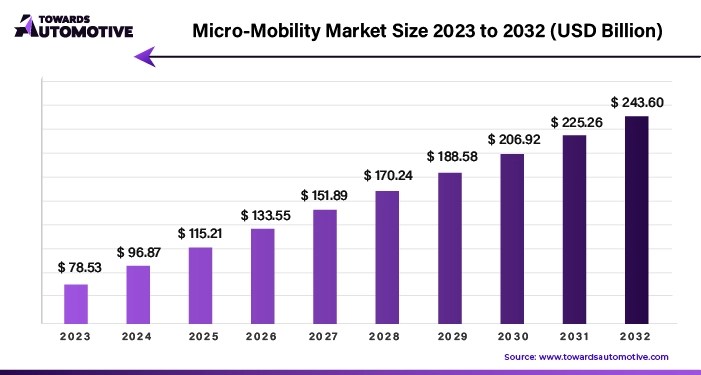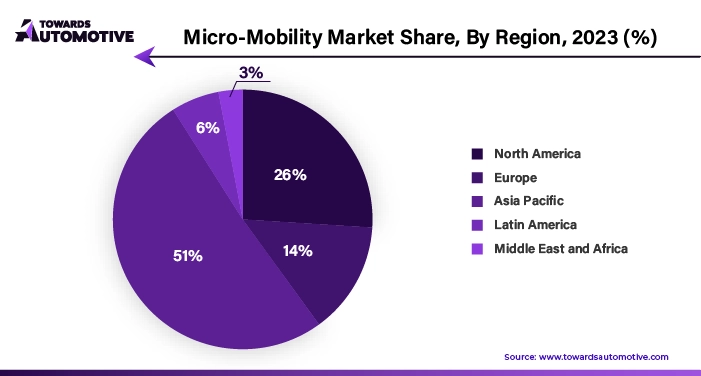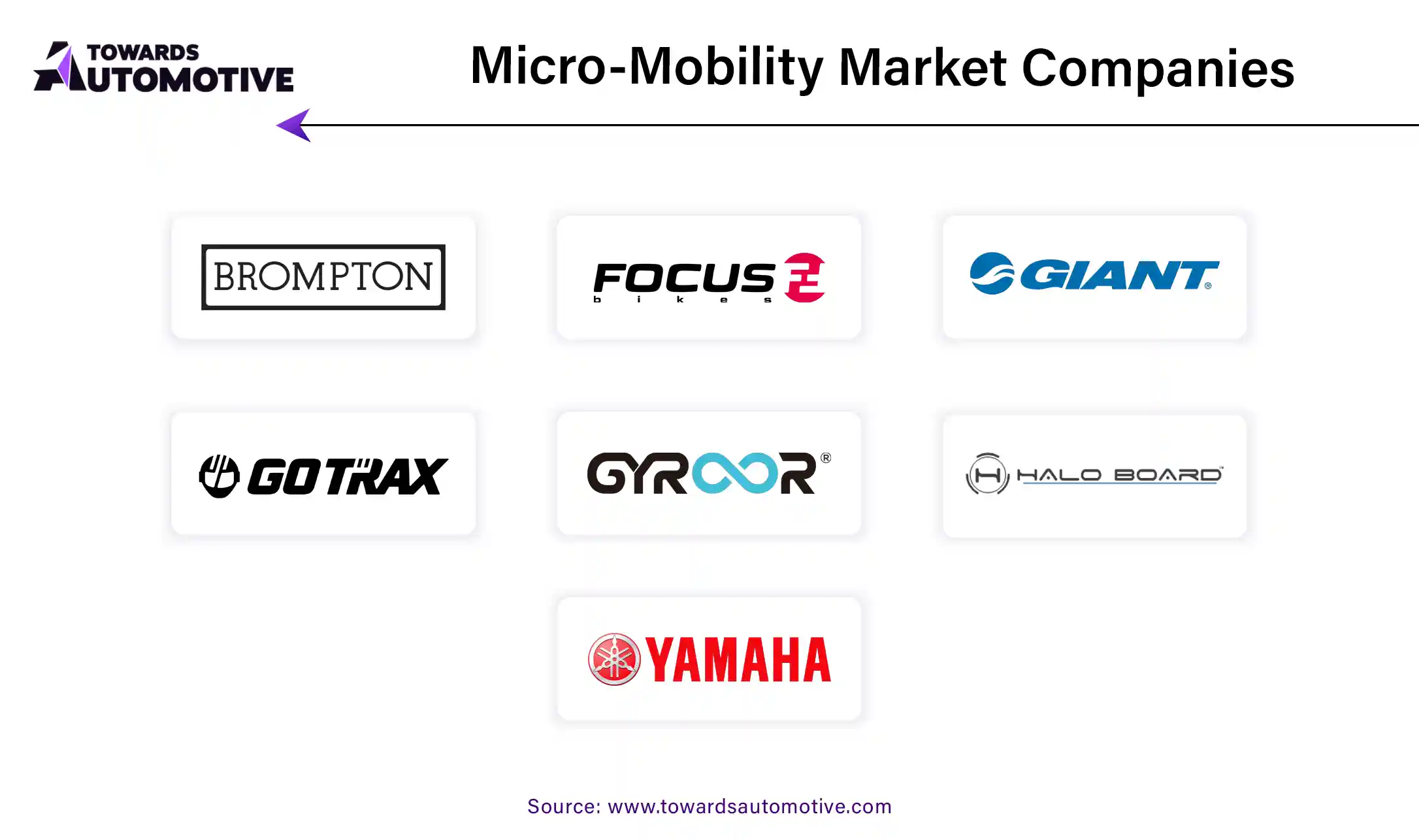April 2025
The micro-mobility market is projected to reach USD 242.41 billion by 2034, growing from USD 96.39 billion in 2025, at a CAGR of 10.79% during the forecast period from 2025 to 2034.

Unlock Infinite Advantages: Subscribe to Annual Membership
The advancement of technology in North America is poised to drive market growth in the realm of micromobility solutions such as e-scooters, e-bikes, and other micro-solutions for urban transportation. These advancements are characterized by the integration of cutting-edge technologies like IoT connectivity, GPS navigation, and enhanced battery management systems, all of which contribute to improving user comfort, safety, and overall efficiency.
For instance,
The micromobility industry is experiencing rapid growth as consumers increasingly gravitate towards transportation alternatives that are both efficient and cost-effective, particularly in densely populated urban areas where traffic congestion is a common challenge. E-scooters and e-bikes, in particular, have emerged as popular choices for addressing last-mile connectivity issues and navigating crowded city streets.
However, alongside the benefits of micromobility solutions, there are also safety concerns that need to be addressed. The rising incidence of electric car accidents and injuries underscores the importance of prioritizing safety measures, especially in urban environments with heavy traffic. Despite efforts to implement safety regulations such as helmet usage, challenges persist, particularly in the context of shared vehicles and the need for convenient travel options.
Balancing the convenience of micromobility solutions with the imperative of ensuring user safety remains a key challenge for both businesses and city authorities. As the micromobility market continues to evolve, stakeholders must collaborate to develop innovative solutions that promote safe and sustainable urban transportation, thereby fostering economic expansion while prioritizing the well-being of users and communities alike.
The COVID-19 pandemic has brought about a profound transformation in the micromobility industry, catalyzing a shift towards safer and more sustainable modes of personal and social transport. E-scooters and e-bikes have emerged as viable alternatives to traditional forms of public transportation, offering commuters a safer means of travel while reducing their dependence on cars and mitigating emissions.
Many local residents have embraced micromobility options, viewing them as an attractive choice for short trips within urban environments. The convenience and accessibility of e-scooters and e-bikes make them particularly well-suited for navigating crowded city streets and addressing last-mile connectivity challenges.
Moreover, the pandemic has accelerated the adoption of contactless payment methods and in-app services within the micromobility sector. This trend has not only enhanced the user experience by making micromobility solutions more convenient and user-friendly but has also contributed to efforts aimed at promoting public health and safety.
Overall, the COVID-19 pandemic has served as a catalyst for the micromobility revolution, prompting individuals and communities to reconsider their transportation habits and embrace alternative modes of travel that are both safer and more sustainable. As the world continues to navigate the challenges posed by the pandemic, the micromobility industry is poised to play an increasingly prominent role in shaping the future of urban mobility.
The electric revolution sweeping through the micromobility industry represents a pivotal shift towards more efficient and environmentally friendly transportation solutions. With electric scooters and e-bikes gaining widespread popularity, their smaller environmental footprint compared to gasoline-powered vehicles is a key driving factor. By producing zero emissions during use, these electric micromobility options contribute to cleaning the air and reducing carbon emissions, aligning with global efforts to combat climate change and promote a greener transition in urban transport.
Moreover, electric micromobility options offer users enhanced performance, including higher speeds and longer driving distances, leading to increased user satisfaction. This combination of environmental benefits and improved performance positions electric micromobility as a compelling solution for modern urban transportation needs.
Addressing the gap between last-mile connections, which refers to the urban transportation challenges surrounding the distance between public transport stations and end users, electric micromobility solutions such as e-scooters and e-bikes emerge as effective solutions. These vehicles provide travelers with comfortable, environmentally friendly, and affordable transportation options for short trips, bridging the gap between public transport and their final destinations.
The accessibility and convenience of electric micromobility options, coupled with the ease of renting or accessing these vehicles via mobile applications, contribute to creating a connected and integrated transportation ecosystem within cities. By promoting urban mobility, reducing congestion, and encouraging greater utilization of public transport for daily journeys, electric micromobility solutions play a crucial role in shaping the future of sustainable urban transportation.
The bicycle segment is poised to dominate the micromobility market in 2022, driven by its versatility and broad appeal to various user demographics. With different types of bikes catering to diverse customer needs, the popularity of e-bikes has surged due to their convenience and user-friendly nature. As urban areas increasingly prioritize sustainability and aim to alleviate traffic congestion, bicycles emerge as a cost-effective and efficient transportation solution, fostering the growth of this segment.
For instance,
The rise of electrically powered micromobility options such as bicycles and electric skateboards contributes to business expansion, driven by their eco-friendliness and ability to reduce reliance on fossil fuels, consequently improving air quality. These solutions appeal to a broad audience, including individuals with physical limitations, and are further enhanced by advanced technologies like GPS tracking and app-based rentals, enhancing convenience for users.
Furthermore, advancements in battery technology have extended the range and reliability of electric micromobility options, making them suitable for day-to-day travel and short-distance trips. This evolution aligns with the evolving preferences and needs of urban residents, driving the adoption of micromobility solutions.
As evidenced by Ford's micromobility subsidiary Spin launching an indigenous electric vehicle in June 2021, companies are increasingly investing in the micromobility market to expand their presence and competitiveness, capitalizing on the growing demand for sustainable urban transportation solutions.
The Asia Pacific micromobility market has emerged as a dominant force, capturing a remarkable 70% revenue share in 2022 and poised for substantial growth, projected to reach $66.4 billion by 2032. This rapid expansion is exemplified by initiatives such as the launch of a high-speed electric scooter by Chinese company InMotion in May 2023, featuring a maximum speed of 68 miles per hour and impressive reusability of 50%.

Infrastructure investments and advancements in smartphone technology have significantly contributed to creating an optimal environment for the proliferation of micromobility services across the region. Countries with dense urban populations, notably China and India, present immense opportunities for market growth, driven by a burgeoning culture of two-wheel transportation and the increasing availability of affordable electric vehicles.
The widespread adoption of micromobility solutions in Asia Pacific reflects a shift towards sustainable and efficient urban transportation options, aligning with the region's focus on reducing carbon emissions and addressing traffic congestion. As investments in infrastructure continue to bolster the micromobility ecosystem, the market is poised to witness exponential growth, catering to the evolving mobility needs of urban residents across the Asia Pacific region.

Major companies operating in the micro-mobility market are:
By Type
By Propulsion
By Age
By Sharing
By Geography
April 2025
April 2025
April 2025
April 2025
We offer automotive expertise for market projections and customizable research, adaptable to diverse strategic approaches.
Contact Us